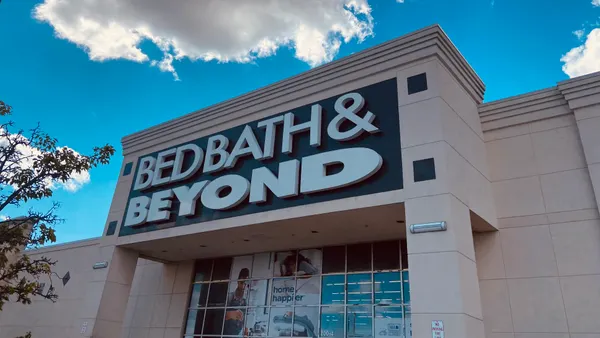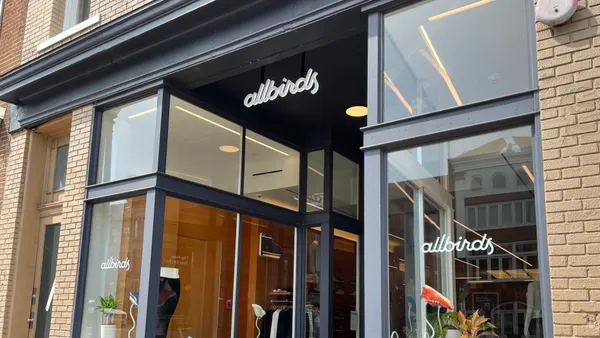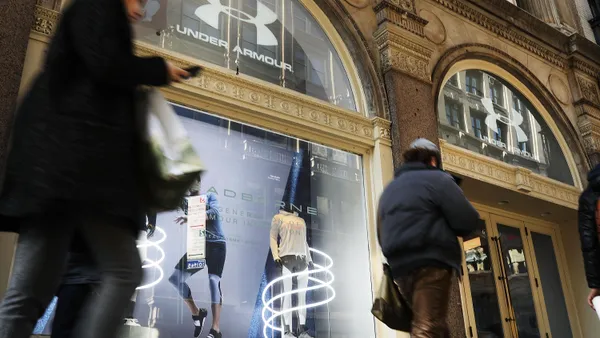Quick Facts
Amazon buys Whole Foods
-
Acquisition price:
$13.7B
-
Amazon CEO:
Jeff Bezos
-
Whole Foods CEO:
John Mackey
Date of merger:
August 28, 2017
Whole Foods stores selling Amazon devices:
100
Last year in March, Amazon unveiled its first physical bookstore. Now there are 13, and three more are slated for 2018.
In May, the company launched its first grocery pick up location. Now there are two.
In August, the e-commerce giant bought Whole Foods and with it 465 physical stores — increasing its physical presence by over 25 times.
"Not only for Amazon, but you just look at what it did to the rest of the food industry — and it’s a big deal," Keith Anderson, Profitero VP of strategy and insights, told Retail Dive about the blockbuster $13.7 acquisition that shook the business community this year.
As Anderson notes, the significance of the deal stretches far beyond what it means for the company. By the end of the year, the e-commerce giant could account for nearly 45% of all U.S. e-commerce sales. While that may not scare brick-and-mortar retailers, which cater to the roughly 90% of shopping that still takes place in stores, Amazon's push into physical is rattling Wall Street.
The day news hit that Amazon would take over the upscale grocer, shares of Target fell 5%, Costco dropped 7%, Kroger 9% and SuperValu plunged 14%.
By the numbers
The amount Amazon paid for Whole Foods (Source: Amazon, Whole Foods)
The number of Whole Foods’ physical stores Amazon got out of the deal (Source: Whole Foods)
The percentage that Whole Foods' store traffic rose by within the first two days after the acquisition (Source: Foursquare)
How much money Amazon made off Whole Foods private label products sold online in the first month after the acquisition (Source: One Click Retail)
Whole Foods stores have also become a "pricing lab" for Amazon to hone its merchandising of specialty products across its physical and online retail ecosystem, according to consultant and author Hermann Simon. Amazon’s pricing and data strategy will unfold in three steps, Simon said. First, the company will alter Whole Foods’ price perception by expanding product discounts. In doing this, Amazon will broaden the market for healthy and natural foods. Finally, the e-tailer will apply its findings to its broader retail offerings.
In the immediate aftermath of the merger, Amazon slashed prices at Whole Foods, lowering prices on grocery staples like organic bananas, avocados, farm-raised salmon, organic brown eggs and lean ground beef.
Amazon has also begun selling Whole Foods' private-label products, including 365 Everyday Value, on Amazon.com, AmazonFresh Prime Pantry and Prime Now. By October, Amazon had raked in $1.6 million worth of Whole Foods private label products on Amazon.com.
Amazon immediately began using Whole Foods stores to boost device sales. Ahead of the holidays, over 100 Whole Foods stores will carry the new Amazon Echo, Echo Dot, Fire TV, Kindle and Fire tablets, and in several markets Amazon will also host pop-up shops at Whole Foods stores, where customers can learn about devices as well as Prime Video and other loyalty perks. For Amazon, physical stores are in many ways the missing piece to its marketing efforts.
Suffice to say, no other acquisition this year comes close to the significance that this merger could have on both the retail and food industries. "Amazon has blown apart the definition of retail," Greg Portell, lead partner in the consumer and retail practice of consulting firm A.T. Kearney, told Retail Dive. "We’re not talking omnichannel. We’re talking about companies that sell stuff regardless of how it gets sold. Let’s move product — whether the product is a shirt, a computer or an orange. That’s an important element because they’re putting their money where their mouth is and creating a retail environment without boundaries."
Looking Forward
Amazon’s purchase of Whole Foods shows the e-commerce giant is a serious threat not only online, but in the brick-and-mortar ecosystem, too. More acquisitions are likely to come as Amazon expands its offerings in apparel and consumer goods.












